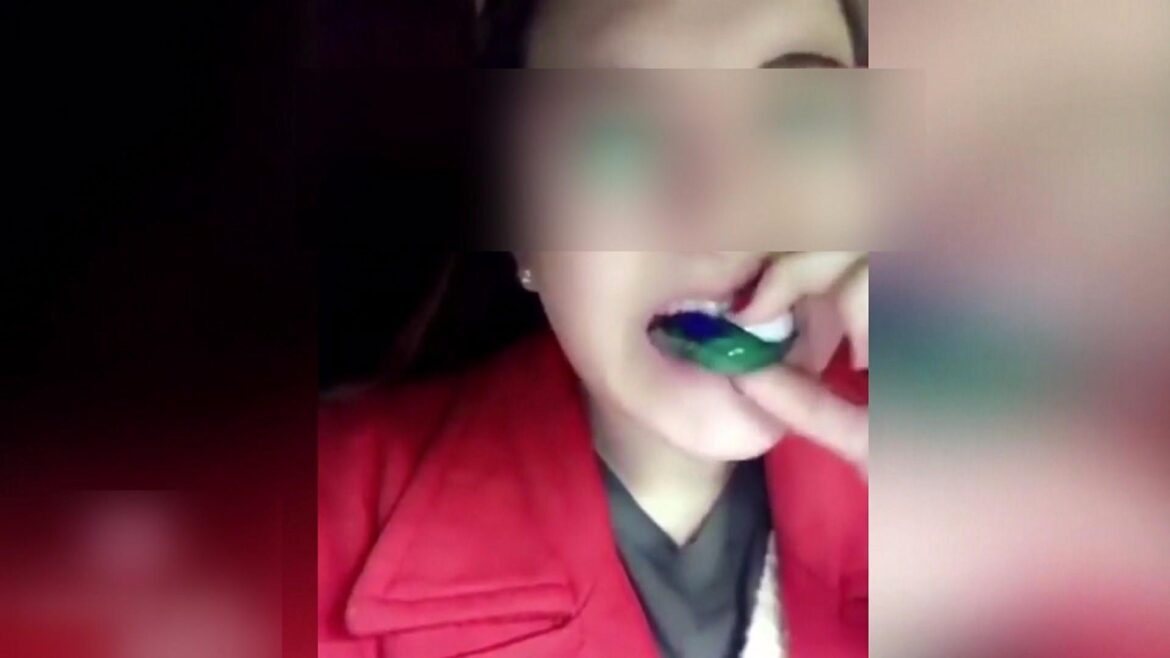In 2019, there were 4.39 billion internet users, spending an average of 6 hours and 42 minutes online. 71% of them belonged to a young target audience, with 30% being under 17 years old. These are the statistics revealed by the We Are Social report from last year on users’ online habits. According to UNICEF, 1 in 3 users is a child.
On the other hand, there are 200 million very young active users on TikTok, the social network that originates from China and is popular among adolescents aged 13 to 16. Born just over three years ago as an app for creating and editing short music clips without any particular technological expertise, it is now an archive that receives over 12 million videos per day from all corners of the world. These videos, which until a few years ago, when the network was still called ‘Musical.ly,’ were innocent and entertaining karaoke, now raise concerns due to the uncontrolled obsession of young people with astounding the web community, no matter the cost, even their lives.
Despite a fine of nearly 6 million dollars imposed on the company by the Federal Trade Commission for violating children’s privacy protection, and despite the continuous removal of dangerous hashtags, the use of the app by minors without adult supervision is strongly discouraged. The recklessness with which young people spread their data in the digital space is astonishing, but even more disturbing is the nonchalance with which adults underestimate the influence of certain information available online. These messages influence their children and interfere with their natural growth, giving rise to phenomena like nomophobia, the fear of being offline, as well as the insidious cyberbullying and the unfortunate grooming, online seduction by pedophiles and criminals. The obsession with popularity has led to absurd challenges involving very young individuals. Astonishing with explicit content or facing danger to have the most viral video is the daily mantra of subscribers. It happens on Facebook, it happens on YouTube, it happens on WhatsApp chats, and many other social media platforms.
This unhealthy exhibitionist obsession claims victims and produces social misfits. As we know, every social relationship among the new generations is filtered through social media and subjected to online approval. Likes and approvals increase the user’s sense of acceptance and self-esteem. Conversely, indifference or, worse, derogatory comments under a post cause insecurity, feelings of inadequacy, and frustration, which can compromise the mental health of young people and lead to anxiety and depression disorders. Simultaneously, it triggers a mechanism of narcissism supported by apparent anonymity, which releases all inhibitions in individuals, leading to extreme cases of exhibitionism, even to the point of risking their lives to become popular.
This happens due to a lack of adult supervision, increasingly permissive or even authoritarian parents, and a certain dependency on ‘adrenaline’ content that drives young people to stay hyperconnected for hours, even at night. This generates a sleep disorder known as ‘vamping,’ and followers of influencers who dictate styles and trends that are not always harmless. Most networks aim to keep users engaged and bombard them with advertising, relying on what is called the ‘contagion effect.’
An experiment conducted on Facebook and Twitter in 2015 showed that emotions can be transmitted from one user to another without physical contact between people. A sort of digital epidemic fueled and supported by the relentless work of algorithms that repeatedly display content similar to what is being viewed, amplifying and emphasizing the feelings experienced, and, most importantly, without distinguishing between negative and positive information. To learn more, visit link.
This is how the most absurd and insidious competitions find fertile ground on social media, turning any competition, even the most transgressive, into a viral chain. Just think of what happened with the ‘Ice Bucket Challenge,’ where a bucket of ice water was poured over one’s head to raise awareness about ALS. Do you remember? This international solidarity challenge raised $220 million worldwide. But not all social media competitions have such noble purposes.
From the less harmful trend known as the ‘Samara Challenge,’ where participants dress up as the character from the horror movie “The Ring” to terrify people on the streets, to challenges involving overeating garlic or chili until crying or vomiting, to the most stupid and invasive trend of inserting a condom through the nostrils and pulling it out through the mouth, to harmful practices like bleaching one’s eyes with bleach (a colossal hoax that many innocently believed, resulting in severe corneal damage). The list of the most insane and idiotic challenges continues, but I will only focus on a few. Among these, it is worth mentioning the ‘Tide Pod Challenge,’ a competition to ingest detergent capsules. Over forty teenagers have been hospitalized in serious conditions in recent months, with ten deaths due to severe poisoning, prompting consumer associations to urge companies to change the color of the capsules to make them less attractive.

The ‘Bird Box Challenge’ is another noteworthy challenge, inspired by a horror movie on Netflix. According to its absurd rules, participants blindfold themselves while navigating through traffic, driving cars and scooters without seeing, and moving blindly, all to post videos on social media and appear courageous. The famous network had to issue an appeal asking people to stop this reckless challenge. Just in these hours, some Italian news outlets are reporting cases of twelve-year-olds in alcoholic comas caused by ‘binge drinking,’ the alcohol consumption challenge that sent 38,000 children to the hospital in 2018. And there is also the ‘Momo Challenge,’ which appears to incite suicide, or even more chilling, the so-called ‘Planking Challenge.’ An illogical challenge that involves lying down on the road and rolling to the sides of the roadway just before a car arrives, while friends record the scene with their phones. The winner is the one who manages not to get hit!
These pranks have had serious consequences. Just read the news from recent months to understand how the danger of underestimated actions harms oneself and others, whose only fault is being in the wrong place at the wrong time.
It is necessary for parents to regain their role as educators, which has been gradually eroded over time. They should act as filters between the information received by their children and the message it conveys, re-establishing dialogue with young people, teaching them the values of life and self-respect. I will never tire of repeating that one’s self-esteem cannot and should not be measured by virtual approval but must be built over time through real interactions and confrontations, with mistakes and falls, with self-acceptance and the acceptance of one’s limits, moving beyond the concept of competition and victory at any cost, the pursuit of often unattainable physical perfection, and distancing themselves from the influencer’s mystification.
by Federico Di Mattia
